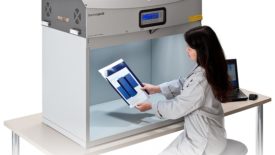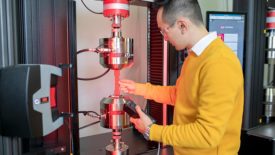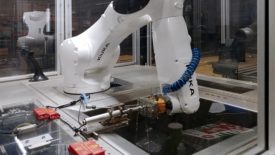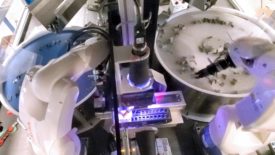ARTICLES
ESG | Part 2
From consistent disclosure to systematic emission reduction, quality management plays a crucial role in the ESG landscape.
Read More
Measurement
Advances in Automation and Robotics Make CMMs More Efficient, Accurate
September 17, 2023
ESG | Part 1
Reimagining Sustainability: A Comprehensive Guide to ESG Integration in Manufacturing
Industry experts discuss the new shades of “green jobs,” the pivotal role of quality departments in achieving sustainability goals, the challenge of talent gaps, the need for a broader view beyond compliance, and the essential training paths to foster a more resilient, inclusive future.
September 14, 2023
Management
The Essential Benefits of ISO Standards for Manufacturers
By implementing these standards, manufacturers can manage risks, drive continuous improvement, and gain a competitive edge.
August 25, 2023
Software & Analysis
Advances In SPC Software Make It Indispensable
Machine learning, predictive analytics, and other new features are making statistical process control (SPC) software even more valuable.
August 1, 2023
Revolutionizing Color Quality Control through Technology and Sustainability
Advancements in digital color measurement technologies and cloud-based software have transformed color quality control, enabling greater accuracy, efficiency, and sustainability, while automation and circular economy principles are driving further innovation in the industry.
July 12, 2023
Management | Robotics
As Robotics Gain Hold, Here’s How to Manage Them
The pandemic has only fueled the worker shortage, prompting manufacturers to embrace automation in large numbers. Senior leadership can ensure robotics are implemented correctly.
June 1, 2023
Quality 101
Automation’s Growing Role in Universal Testing
The pandemic proved just how important universal testers are to quality. As staff shorages endure, automation is keeping this technology on point.
May 10, 2023
Quality in Automation | Robotics
Automated Robotics Are Just Getting Started
These machines are only gaining favor post pandemic.
April 19, 2023
Vision & Sensors | Cameras
The Changing Face of Smart Cameras in Machine Vision
Beyond the growth in applications brought about by improvements in CMOS sensor technology, another significant trend is the increase in applications that extend beyond the visible spectrum.
March 16, 2023
Stay in the know with Quality’s comprehensive coverage of
the manufacturing and metrology industries.
eNewsletter | Website | eMagazine
JOIN TODAY!Copyright ©2024. All Rights Reserved BNP Media.
Design, CMS, Hosting & Web Development :: ePublishing









